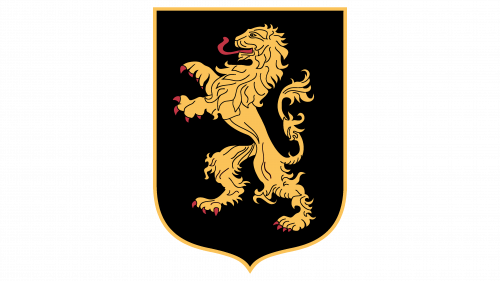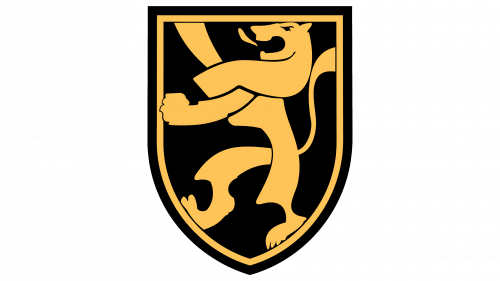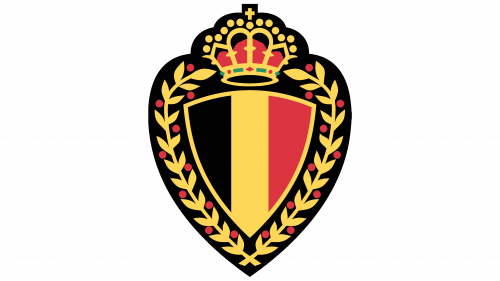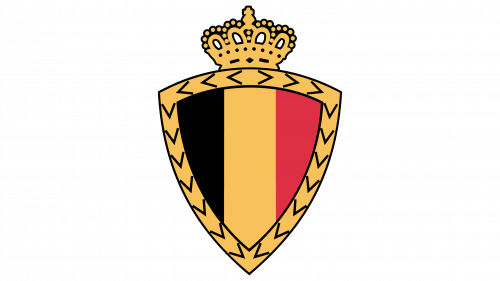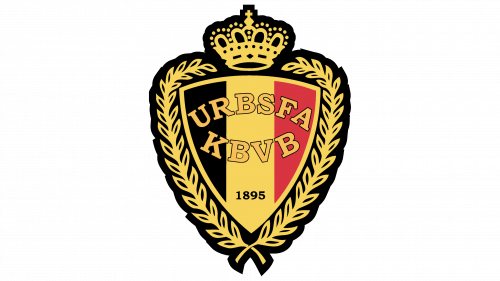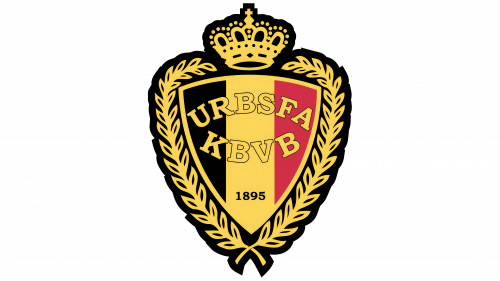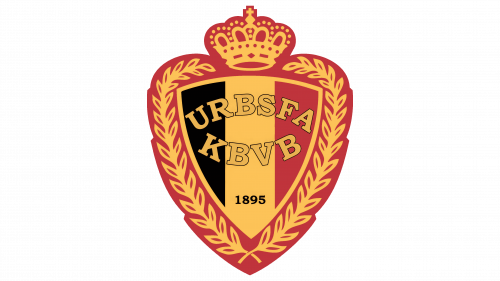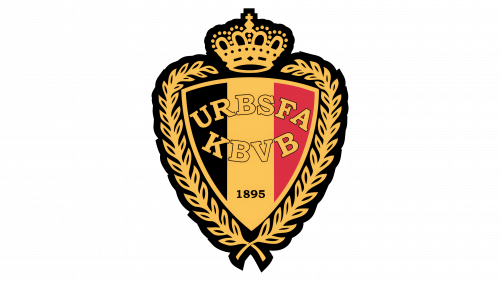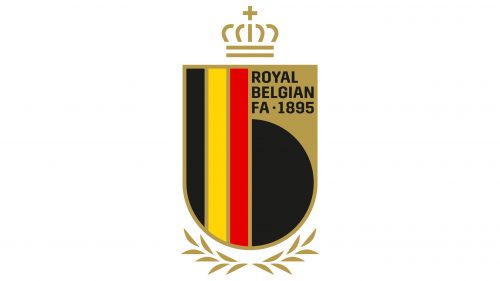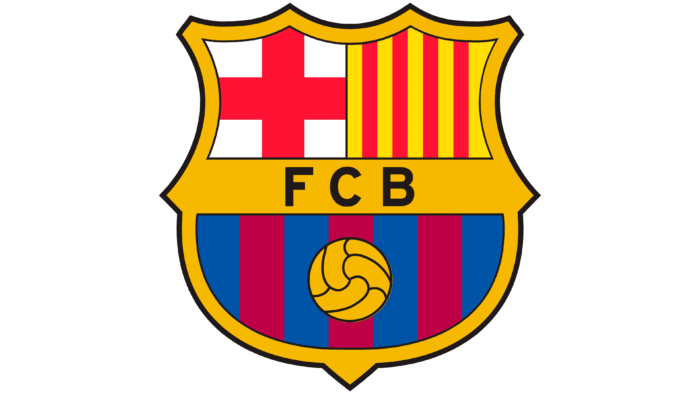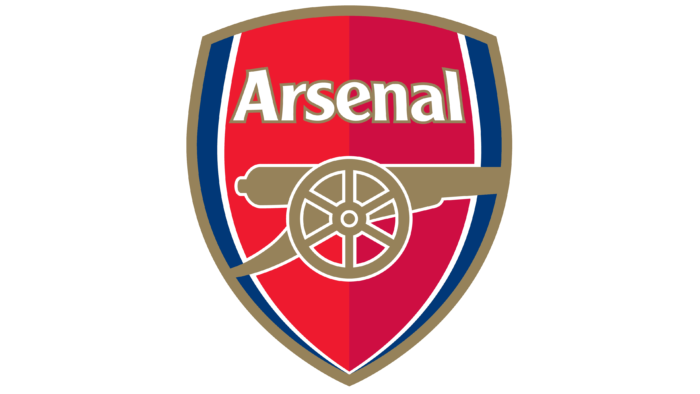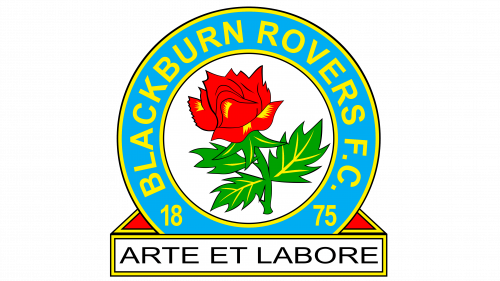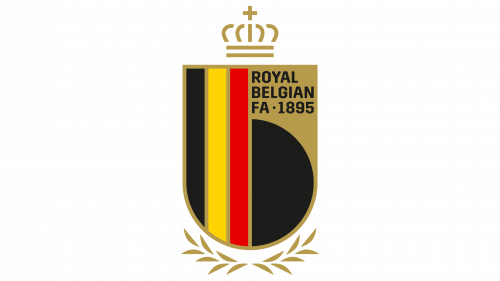 Belgium National Football Team Logo PNG
Belgium National Football Team Logo PNG
The logo of the Belgium National Football Team is regal and majestic. The emblem, surrounded by victories and crowned with laurels, combines historical and national symbols, reflecting pride, courage, and a drive for success.
Belgium National Football Team: Brand overview
The Belgian national football team’s story is a journey of resilience, transformation, and ultimate triumph. Football arrived in Belgium in the late 19th century, and the national team was established in 1904, shortly after the creation of the Royal Belgian Football Association. The team played its first official match in 1905, securing a 3-1 victory over France.
In its early years, the Belgian team achieved notable results. A highlight came in 1920 when Belgium won bronze in football at the Antwerp Olympics. Four years later, they clinched the Olympic gold at the Paris Games, showcasing their growing prowess in the sport.
The 1930s and 1940s were challenging for the “Red Devils,” as the team struggled to make a significant impact internationally. However, the 1960s heralded a new era of promise with a “golden generation” featuring players like Paul Van Himst and Jan Mulder. In 1972, Belgium secured an impressive third place at the UEFA European Championship, trailing only West Germany and the Soviet Union.
The following decades saw stagnation and disappointment. The 1970s and 1980s were particularly tough, with Belgium often failing to qualify for major tournaments. Despite the setbacks, a few standout players emerged. Jean-Marie Pfaff, the heroic goalkeeper of the 1986 World Cup, and midfield maestros like Enzo Scifo and Franky Vercauteren became legends. However, their brilliance couldn’t propel the team to consistent success.
The tide began to turn in the 1990s. A fresh wave of talent reinvigorated the team, including Luc Nilis, Marc Degryse, and Philippe Albert. This period laid the groundwork for future success, but it wasn’t until the early 2000s that Belgium’s fortunes truly changed.
A pivotal moment came with the emergence of the “Golden Generation.” These players, raised in Belgium’s multicultural environment, brought diverse influences and styles to the team, united by a common goal: to elevate Belgian football. The Hazard brothers and Romelu Lukaku led this charge, whose skills and passion ignited a renaissance. Other stars like Thibaut Courtois, Vincent Kompany, and Marouane Fellaini soon joined them.
The 2010s marked a new golden age for Belgian football. The “Red Devils” reached the quarterfinals of the 2014 World Cup in Brazil, their best performance since 1986. The team’s joyful and dynamic play, blending Lukaku’s powerful dribbling with Eden Hazard’s finesse, captivated the football world.
In 2018, under the guidance of Roberto Martínez, Belgium achieved its best-ever World Cup finish, securing third place after a narrow semifinal loss to eventual champions France. This bronze medal shattered the long-standing myth of Belgium as a perennial underachiever, proving that they could indeed compete with the world’s best.
Roberto Martínez’s tenure saw the team consistently ranked among the top in the world, built around a core of players from elite clubs. In 2022, Belgium once again reached the World Cup playoffs, cementing their status as a formidable force in international football.
The tale of the Belgian national team is one of dedication, passion, and the pursuit of excellence. The legacies of Courtois, Hazard, Lukaku, and their peers inspire future generations of Belgian footballers and fans, demonstrating that with perseverance and talent, great achievements are possible.
Meaning and History
What is the Belgium National Football Team?
The Belgium National Football Team, known as the Red Devils, represents Belgium in international football competitions. Managed by the Royal Belgian Football Association (KBVB/URBSFA), the team has gained significant prominence in recent years, consistently ranking among the top teams in the world. Known for their attacking prowess and talented squad, Belgium has produced many world-class players who have excelled globally. The team’s dynamic style of play and strategic acumen have earned them respect and admiration in international football. Belgium’s passionate fan base and commitment to excellence make it a formidable sports force.
1920 – 1950
After World War I, the sports club aimed to make its mark on the international stage. The logo features a heraldic lion from Belgium’s coat of arms. The black background highlights the players’ masculinity and toughness. The king of beasts predicts a leading position for the team in world football. The combination of gold and black looks luxurious, giving the emblem an elegant and regal appearance. The detailed and precise rendering of the elements demonstrates seriousness, responsibility, and the ability for clear planning and strategic play.
1950 – 1980
After the war, up to the 1960s, Belgium participated in only one international event—the 1954 World Cup in Switzerland. The preparation for the game included rebranding. The logo was updated, retaining the lion in a more stylized and modern form. The royal symbol reflected the spirit of the times, emphasizing the team’s renewal and modernization. The transformation conveyed a desire for a new beginning and progress, aligning with changes in society and sports. The new lion seemed confined within the shield, illustrating readiness for international cooperation and embracing a renewed world.
1981 – 1984
1981, the logo adopted a more official and ceremonious appearance, emphasizing the team’s status after securing second place at Euro 1980. A heart shape with a triangular shield inside highlighted national pride and love for the country’s team. The Belgian flag within conveyed the team’s patriotic feelings. Laurel branches around the edge symbolize triumph and victory. The royal crown, representing the support of the ruling monarchs, made the emblem majestic and noble.
1984 – 1989
The 1984 symbol became more athletic and streamlined. The main elements remained: a shield with the Belgian flag, a laurel wreath, and a crown, but the lines gained clarity with smooth, streamlined features. The laurel leaves transformed into a broad gold border, resembling a golden chain, hinting at the athletes’ awards and achievements. The team achieved high results in championships for several years and felt confident as experienced and worthy opponents. The black heart shape disappeared, making the emblem more dynamic and free. The logo showcased the readiness for a determined fight for first place.
1989 – 1991
The main update to the logo included a dense laurel wreath around the image and the return of a black border, mirroring the country’s coat of arms. The rich gold and detailed rendering of the crown made the emblem look festive and ceremonial.
For the first time, inscriptions appeared in the center. Two abbreviations in French and Dutch, the official languages of Belgium, represented the Royal Belgian Football Association. URBSFA stands for Union Royale Belge des Sociétés de Football Association, and KBVB stands for Koninklijke Belgische Voetbalbond. The organization oversaw the national team and was responsible for its formation.
1991 – 1996
In 1991, the color of the abbreviation was slightly modified to a brighter and lighter shade. This change aimed to create an effect of radiance and sparkle. The letters were designed to blend more harmoniously with other golden elements, making them stand out clearly against the backdrop of the flag. This adjustment enhanced the emblem’s overall visual appeal and coherence, ensuring the abbreviation was prominent and easily recognizable.
1996 – 2000
Replacing the primary background with red was a tribute to the national team’s achievements and victories. This change highlighted the golden era of Belgian football. Adjustments to the base color influenced the entire palette of the logo. The crimson gold on the noble scarlet background appeared luxurious and celebratory, enhancing the overall aesthetic and creating a sense of grandeur.
2000 – 2009
The team returned to a previous design, maintaining a darker shade for the golden elements. Many of Belgium’s football stars had left the team, and the emblem served as a reminder of the national team’s glory days. This change in the emblem preserved the legacy and celebrated the memorable moments of Belgian football history, ensuring that past stars’ accomplishments remained recognized.
2009 – 2019
Dark gold serves as the primary color of the logo. Removing the background brought the laurel branches and the central inscription to the forefront. The logo conveys a greater sense of lightness and freedom. The inner triangle appears smaller in size, symbolizing the young generation that has joined the team. These young players are expected to prove themselves and aspire to reach the heights and achievements of the previous roster.
2019 – today
The modern logo’s central element is a shield, symbolizing protection. This element is associated with bravery and honor, highlighting the courage and resilience of Belgian footballers.
Inside the shield is a lowercase “b.” The vertical glyph of the symbol consists of three stripes from the Belgian flag. Black represents determination and strength. Yellow signifies prosperity and wealth. Red embodies courage and bravery.
Previous logo elements have been retained but slightly modernized. The crown above the shield now has lighter and more schematic lines. As a symbol of the monarchy, it underscores respect for the country’s traditions and history. The laurel wreath now surrounds only the lower part of the shield, symbolizing victory, triumph, and the team’s successes on the international stage.
The logo’s minimalist elements combine tradition and modernity. They emphasize a commitment to innovation and the team’s development while using the experience and knowledge of the past.

